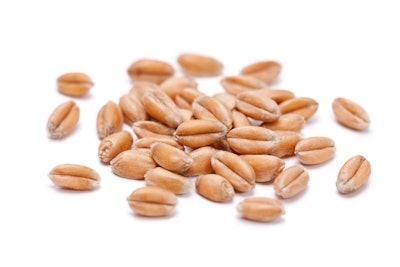
Cereals are essential components in most animal feeds, providing the majority of energy for monogastric and ruminant animals. Two primary components of cereals that play a critical role in animal nutrition are amylose and amylopectin, which are forms of starch. Understanding the relative concentrations, differences, characteristics, properties and digestibility of amylose and amylopectin is crucial for optimizing animal diets.
Amylose and amylopectin: relative concentrations
Amylose and amylopectin are the two main components of starch found in cereals, with varying proportions in different grains. These proportions can greatly influence the nutritional characteristics of a cereal source in animal diets. Generally, cereals can be classified into three broad categories based on their amylose and amylopectin content:
- High-amylose cereals: Cereals such as oats and barley are known for their higher amylose content, typically around 25% to 30% of total starch. These cereals are slower to digest in monogastrics and are often preferred in certain animal diets for their sustained release of energy.
- High-amylopectin cereals: Corn and wheat are examples of cereals with high amylopectin content, making up 70% to 75% of total starch. These cereals are rapidly digestible and provide a quick burst of energy for monogastrics, with the opposite effect in ruminants.
- Intermediate cereals: Some grains, such as rice and sorghum, have intermediate levels of amylose and amylopectin, offering a more balanced energy source suitable for all animals.
Differences in structure and characteristics
Although both composed only of glucose, amylose and amylopectin differ in their chemical structures and characteristics:
- Amylose: Amylose is a linear polymer of glucose units linked by α-1,4-glycosidic bonds. It forms a helical structure that is relatively insoluble in water. Amylose's helical structure makes it less accessible to enzymes, which can lead to slower digestion and a more sustained energy release.
- Amylopectin: Amylopectin, on the other hand, is highly branched, with α-1,4 and α-1,6-glycosidic bonds. This branching structure provides a larger surface area for enzymatic attack, resulting in faster digestion and a quick energy release.
Properties affecting animal nutrition
The properties of amylose and amylopectin have significant implications for animal nutrition:
- Glycemic response: High-amylopectin cereals, such as corn, can lead to a rapid increase in blood glucose levels, making them suitable for quick energy requirements, such as in broiler chickens or high-performance horses.
- Sustained energy: Cereals with higher amylose content are better suited for animals requiring day-long sustained energy supply, such as dairy cows, as they release glucose more gradually.
- Digestibility: Amylose is more resistant to enzymatic digestion due to its helical structure, while amylopectin is more readily broken down. This difference in digestibility influences how efficiently animals can utilize starch from different cereal sources.
Digestibility by monogastrics vs. ruminants
Digestibility of amylose and amylopectin varies between monogastric and ruminant animals:
- Monogastrics (e.g., poultry and swine): These animals have a single-chambered stomach and can digest amylose and amylopectin. High-amylopectin cereals are often preferred for quick energy, while high-amylose cereals can be included for sustained energy.
- Ruminants (e.g., cattle, sheep and goats): Ruminants have a unique digestive system with a four-chambered stomach, including the rumen. In the rumen, microbial fermentation breaks down starch into volatile fatty acids, making high-amylose cereals a more favorable choice for ruminants, as they provide a steady release of energy over time.
In brief, amylose and amylopectin are integral components of cereals used in animal nutrition. Their relative concentrations, structural differences, and properties significantly impact the nutritional value of cereal grains. Understanding these differences and tailoring cereal choices to the specific dietary needs of animals, whether monogastric or ruminant, is crucial for optimizing animal health and productivity.

















